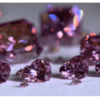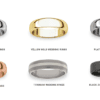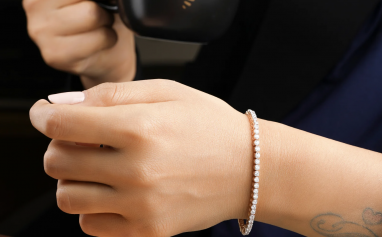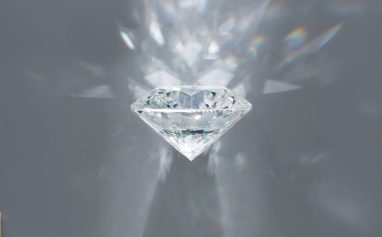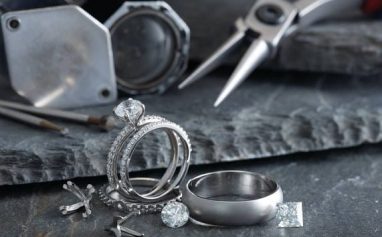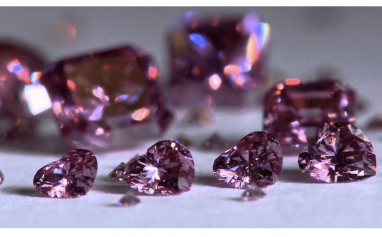Diamond Colour Information
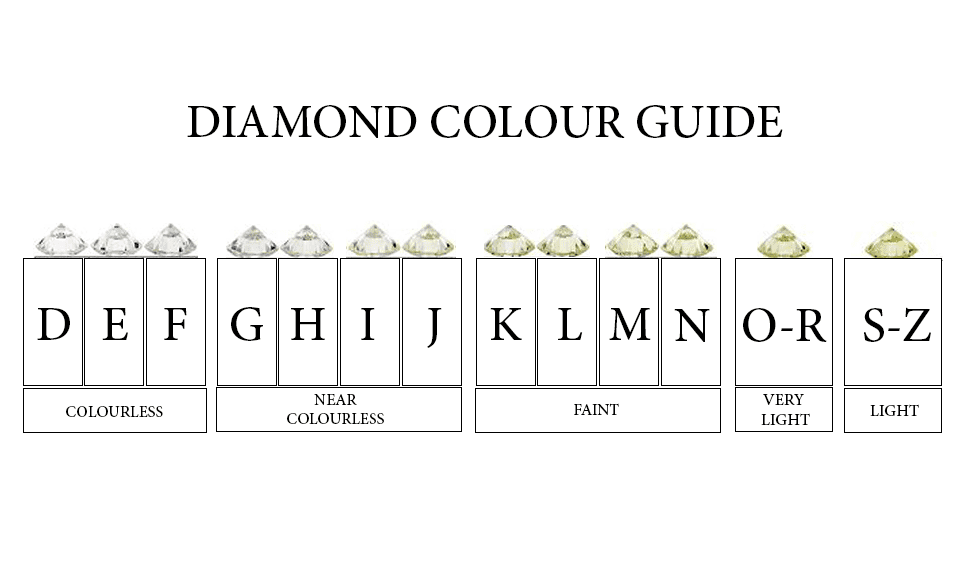
Diamonds come in various colours; the most popular jewellery item is the white series of diamonds.
The rarest and sought-after diamonds are colourless and demand the highest price. So, how do we colour-grade a diamond? The Gemological Institute of America, the world’s largest and most trusted diamond grading facility, invented the diamond colour grading scale. The highest and most colourless diamond is a D colour, so the scale starts here. Diamonds that show no colour are known as colourless, including D-E-F colours. Near colourless linearly show a very tiny hint, including G-H-I-J. At Polished Diamonds, we sell mainly D-J colours, but the scale goes down to Z, which shows significant colour – see the scale below.
The vast majority of gem-quality diamonds are represented in the above colour scale, which goes from colourless D to taking on yellow or brown overtones of colour down to Z. So, as diamonds take on more yellow colour, they become less sought after and less expensive. You can see in the above image that the scale is very subtle and gradual indeed, and it’s not until J-K-L and with a direct comparison that the yellow tint starts to show.
We recommend that clients buy high-quality diamonds that best fit their needs and budget. If you are buying a ring made in Platinum, then a D-E-F is best suited as these are colourless and will not take on any reflection from yellow gold. Suppose you want diamond size but are limited in your budget. In that case, the G-H-I represent excellent value, and these can also be set in Platinum and look fabulous (I set a G colour in Platinum – it looks fantastic). So the G-H-I colours represent good value, and the D-E-F colours represent very high quality at a slightly higher price.
As you can see in the above graphic, the difference is very insignificant. If you want to use yellow gold, we recommend using G-H-I as you will get some colour reflection from the yellow gold, and use J colour to get the size up if your budget is tight. We find that diamonds in the K-L-M spectrum show faint yellow colours, and we prefer not to advertise them for sale as their sparkle and performance can be reduced.
Once diamonds reach the Z colour in the white series, they start to take on a different colour scale. We know these diamonds as Champagne and Cognac diamonds. Champagne diamonds are known as C1-C2-C3, and when more brown is added, they become C4 to C8. Check the colour chart below to see the subtle change in colour.

The Champagne and Cognac diamonds series above are much less expensive than the white diamond series and offer excellent values to increase the size and add a different dimension as the colour is quite visible. Some clients like combining a darker Cognac diamond in the centre with a halo or circle of white diamonds to frame it up. This can be done more subtly using the C1-C3 Champagne series; they look good and are a valid alternative. Contact us to quote and prepare a viewing of these remarkable diamonds.
The diamond mentioned above colours are the most popular, but we also have other colours available, like pink, blue, fancy yellow, and other items. These diamonds are rare and very sought after, so perhaps contact us for information about what is available, and we’ll match your budget.
Black diamonds are inexpensive, and the brown (Cognac) diamonds are next, followed by champagne and white diamonds. Fancy yellow diamonds are priced similarly to fine white diamonds and form the next price category. Pink, Blue, Red, Grey, Purple, and Green are very expensive, with pricing often around $30,000 for 1/2 carat on an average colour score. The more intense the colour, the higher the price. Contact us for information on these fancy colours; however, because these diamonds are so rare and in short supply, they are collectable with only up to 80 carats per year for worldwide production – the prices are very high, but we appreciate them. The fancy diamond colours have GIA certification to confirm the colour is natural and usually evenly dispersed across the stone. With trusted and reliable GIA documentation, you will buy an appreciating and remarkable gemstone.

Title: The Radiance of Diamond Color: An Exploration of Brilliance, Rarity, and Significance
Introduction: Diamonds have captivated humanity for centuries with their mesmerizing brilliance and timeless allure. Colour stands out as a crucial element among the many facets that contribute to their allure. While often revered for their colourlessness, diamonds also exist in various hues, each conveying its unique charm and character. This essay delves into the significance of diamond colour, exploring its role in determining value, rarity, and the emotional resonance it holds for individuals.
The Spectrum of Diamond Color: In the realm of diamonds, colour is graded on a scale that ranges from D to Z, with D being the most colourless and Z exhibiting a noticeable yellow or brown tint. The Gemological Institute of America (GIA) meticulously assesses diamonds under controlled lighting conditions to determine their colour grade. Diamonds graded D, E, and F are considered colourless, exhibiting exceptional purity and brilliance. As the scale progresses towards Z, the colour becomes more pronounced, with each grade reflecting varying degrees of tint.
The Rarity Factor: While colourless diamonds are highly prized for their pristine appearance, coloured diamonds possess a distinct allure due to their rarity. Natural-coloured diamonds, also known as colour diamonds, derive their hues from trace elements or structural anomalies during formation. Among the spectrum of colours, certain hues such as pink, blue, and red command premium prices owing to their scarcity and intense saturation. The rarity of these coloured diamonds elevates their desirability, making them coveted treasures among collectors and connoisseurs.
Symbolism and Emotional Significance: Beyond their intrinsic value, the colour of a diamond often holds symbolic meaning and emotional significance for individuals. White or colourless diamonds symbolize purity, clarity, and eternal love, making them famous for engagement rings and milestone celebrations. On the other hand, coloured diamonds evoke a sense of individuality and personal expression, allowing wearers to align their jewellery with their unique style and personality. Whether a vibrant yellow diamond represents joy and optimism or a deep blue diamond symbolises tranquillity and depth, each hue carries its symbolism, resonating with the wearer profoundly.
Cultural Perspectives: Throughout history, diamonds have held cultural significance across diverse civilizations, with colour playing a prominent role in their symbolism. In ancient India, diamonds were revered as symbols of spiritual purity and enlightenment, with colourless stones symbolizing divine clarity. In Chinese culture, red diamonds symbolize luck and prosperity, while black diamonds symbolise power and authority. The cultural perceptions of diamond colour reflect a rich tapestry of beliefs and traditions, underscoring the profound impact of colour on human perception and symbolism.
The Influence of Treatments: Modern advancements in technology have enabled the enhancement of diamond color through various treatments and irradiation techniques. While natural coloured diamonds command premium prices, treated diamonds offer a more accessible option for individuals seeking vibrant hues at a lower cost. However, the disclosure of treatments is essential to maintain transparency and uphold the integrity of the gemstone market. Ethical considerations regarding treating diamonds underscore the importance of informed consumer choices and responsible sourcing practices.
Conclusion: In the realm of diamonds, colour serves as a prism through which we perceive beauty, rarity, and emotional resonance. From the pristine brilliance of colourless diamonds to the captivating allure of fancy coloured stones, each hue imbues these timeless treasures with a distinct identity and significance. As we explore the multifaceted world of diamond colour, we gain a deeper appreciation for the interplay between nature’s artistry, human creativity, and the enduring allure of these precious gemstones.

